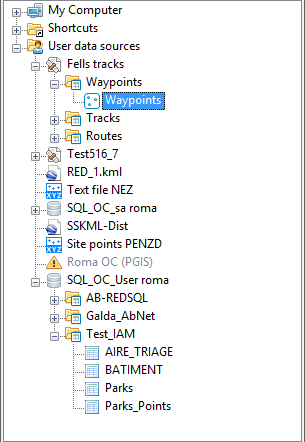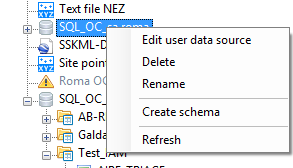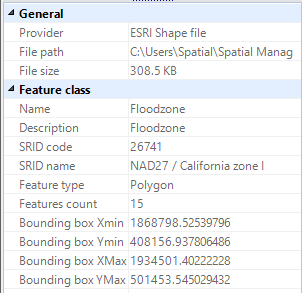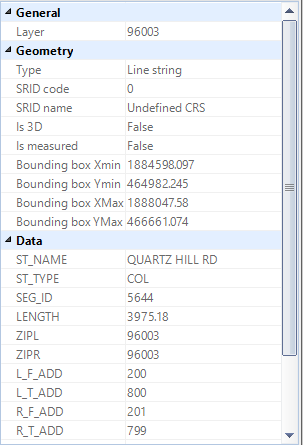Difference between revisions of "Spatial Manager™ for AutoCAD - FAQs: Interface"
m |
m |
||
| Line 34: | Line 34: | ||
[[Image:PropEEDACAD.png|border]] | [[Image:PropEEDACAD.png|border]] | ||
| + | |||
| + | |||
| + | In the Properties area, by placing the cursor over any data, if CTRL + C (standard combination for “Copy”) is pressed, the corresponding data goes to the Windows clipboard and can be exploited within the same application, or any other, using “Paste” or by pressing CTRL + V | ||
| + | |||
| + | If any data is not fully visible due to the width of the Properties area, a Tooltip will display by keeping the cursor over this data | ||
Revision as of 18:16, 26 February 2014
Application panel
The "SpatialManager" panel includes the main functions of Spatial Manager™ for AutoCAD. From here, you will be able to manage your data sources and launch your import processes. Like any AutoCAD panel, the "SpatialManager" panel can be arranged, docked, undocked, grouped, self-collapsed, etc., and resized, depending on the preferences and needs of each user or each job, by dragging its title bar, double-clicking on its title bar, etc.
You can open this panel in AutoCAD by executing the command "SPM", and you can close it by executing the command "SPMCLOSE"
The "SpatialManager" panel is split into two areas: the upper area is the "Data sources" area, and the lower area is the "Properties" area. Inside the panel, you can move the split line up or down to distribute the space for both areas as you need
Data sources area
In this area you can launch Import processes, create, edit or sort Shortcuts and User Data Sources (UDSs), etc.
Content varies depending on the selected data source
Properties area
In this area you can see information about any data source and, when you select an imported object in your drawing, you will see information about this object; if the object data has been imported, you will see here the object Extended Entity Data (EED) also
In the Properties area, by placing the cursor over any data, if CTRL + C (standard combination for “Copy”) is pressed, the corresponding data goes to the Windows clipboard and can be exploited within the same application, or any other, using “Paste” or by pressing CTRL + V
If any data is not fully visible due to the width of the Properties area, a Tooltip will display by keeping the cursor over this data
Wizards
The wizards are the interface layout chosen for the main Spatial Manager™ for AutoCAD functions ("Create user data source" and "Import"). Using them you can go forward and backward through the options or parameters needed to complete a function or process
Selecting a data Provider in the "Create user data source" wizard
Setting up Import parameters in the "Import" Wizard
Sample files
You can find a small set of sample files, which you can use for your own tests, located inside the folder "Common\Samples" (a subfolder of your application main installation folder)
Configuration files
All the settings for Spatial Manager™ for AutoCAD are stored in XML files. This is the list of configuration files:
- Shortcuts.config: Shortcuts configuration
- UserDataSources.config: User Data Source (UDS) configuration
- UserSettings.config: global application settings
You will find them in the folder “user folder\AppData\Local\OpenCartis\Spatial Manager for AutoCAD”
When a file is modified, an automatic backup copy of the file is stored in the sub-folder “backup” within the folder listed above. A backup file includes in its name the date and the time at which it is generated. If you want to restore any backup file, just rename it as the original configuration file and copy it to the appropriate folder, replacing the current application configuration file. You should carry out this operation after closing the application and we recommend you make a copy of the replaced file before replacing it



